Business intelligence consists of the strategies and technologies used by enterprises for the data analysis of business information. With the help of BI tools, you can make critical decisions for your businesses. One such tool for BI is Looker, and In this Looker Tutorial, we will discuss everything you need to know about Looker. So let’s get started.
| Looker Tutorial - Table of Content |
What is Looker?
Looker is a cloud-based Business Intelligence (BI) tool that helps you explore, share, and visualize data that drive better business decisions. Looker is now a part of the Google Cloud Platform. It allows anyone in your business to analyze and find insights into your datasets quickly. Looker makes it incredibly easy to build a data exploration platform that makes your data accessible in a meaningful, intuitive way for your entire organization.
Looker uses Data Modelling Language (DML), and it includes a predefined framework. With Looker, you can analyze data in a very efficient and helpful manner. You can easily connect to multiple data sources, and you can build customized dashboards, KPI dashboards, etc., using Looker.
Looker provides tools to power myriad data experiences, from modern BI and embedded analytics to integrating workflows and custom applications. Regardless, where your data resides, Looker allows you to access the most up-to-date version of your company’s data. It’s a one-stop solution for BI, visualization, analytics, and data management.
| Do you want to get certified and build your career in Looker? Then enroll in "Looker Online Training" this course will help you to achieve excellence in this domain. |
Features of Looker
1. Break down barriers to insight
You can get valuable insights that you need by filtering to granular slices of data from the dashboard in a few clicks. Furthermore, you can initiate data in every conversation possible with the ability to find the solutions you need on the fly, right from within Slack.
2. Increase performance and optimize costs
With Looker’s powerful features, you can improve performance, optimize costs, and manage enterprise-scale deployments better.
With prebuilt UI components, you can unlock new types of data experiences and speed up development workflows. At a low cost, Looker improves your product’s competitive advantage and boosts revenue growth.
Apart from this, we have many other new features. A few of them are listed below:
- Integrated end-to-end multi-cloud platform: You can perform data analysis and visualization across Google Cloud, AWS, Azure, and on-premise databases.
- Common data: You can operate business intelligence for anyone with powerful data modeling that abstracts underlying data at any scale and creates a standard data model for the entire organization.
- Embedded data experiences: Looker supports embedded analytics with rapid value to time and customization.
- Augmented analytics: Augment business intelligence from Looker with leading-edge machine learning, AI, and advanced analytic capabilities built into the Google Cloud Platform.
- Tailored data applications: Create data-centric apps from supply chain logistics to sales support across various industries with embedded machine learning and interactive data visualizations.
We recommend you to watch this Looker Tutorial Video learn Looker easily.
Looker Architecture
The architecture design of Looker consists of a Linux server that has the following connections:

Looker can be customer-hosted in AWS VPC. Using a Looker-hosted instance reduces the efforts needed for installation, configuration, and management of Looker apps and other IT functions handled by you related to Looker apps. Note that Looker application hosting is independent of where data resides. Data always gets stored in the database and is not copied to the Looker instance.
Additionally, Looker requires outbound network access to authorize, backup Git, email relay, and license checks.
HyperSQL is picked as an in-memory database for the Looker application's internal databases by default. In busy instances, the size of the database grows and leads to performance issues. To overcome these deployments, users need to replace the HyperSQL database with a MySQL database backend.
Furthermore, users can achieve efficient traffic control on Looker by deploying a cluster of Looker nodes behind a load balancer, as shown in the figure below:
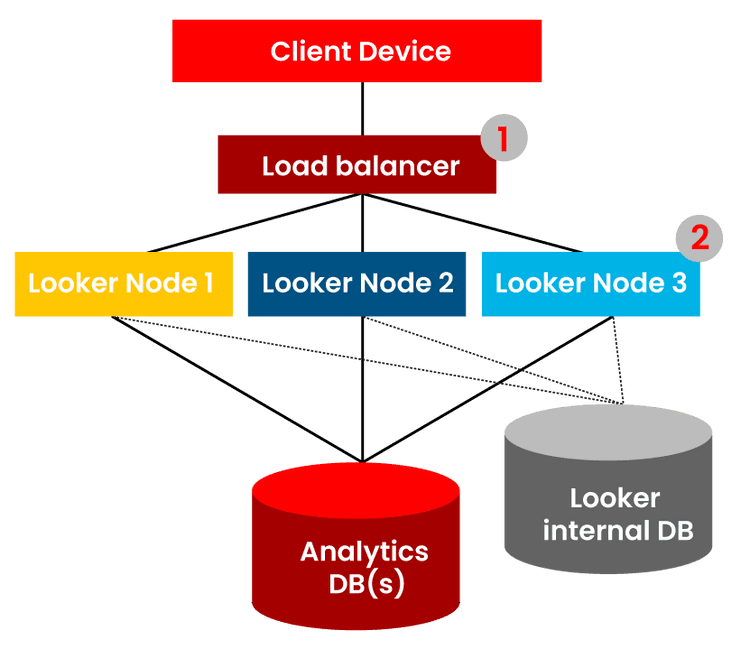
Various looker nodes can be deployed in a clustered environment behind a load balancer/proxy server. Each node communicates with the other via HTTPS, leveraging additional security measures.
This would be the recommended approach for a production instance with a 100% uptime.
What is a LookML?
LookML is a language used to describe dimensions, calculations, aggregates, and data relationships in a SQL database. Looker practices a model in LookML for SQL queries construction against a specific database.
How does Looker work?
Looker is a tool that creates SQL queries and passes them against a database connection. It produces SQL queries based on the LookML project, which describes the relationship between columns and tables in a database.
The following steps explain the working of a Looker:
1. Viewing the Query
You can use the SQL tab in the data section to know what Looker sends to the database to get the data. You can even use links at the bottom to view your query in SQL Runner.
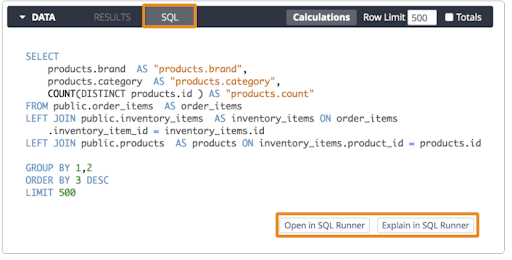
2. The canonical form of a Looker Query
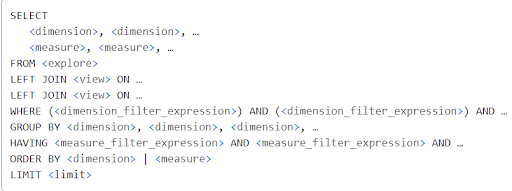
The LookML project defines all the dimensions, explores, measures, and views referenced in the formula above.
| Check out Looker Interview Questions and Answers |
3. Running raw SQL in Looker’s SQL Runner
Looker contains a SQL runner feature that runs SQL against database connections you’ve set up in Looker. Raw SQL queries executed in SQL Runner produce the same result set.
SQL runner will highlight the error in the SQL command and the error position in the error message if SQL includes any errors.
What are looker Blocks?
Looker Blocks are the prebuilt data models used to accelerate your data sources and analytics patterns. Looker Blocks are an entry point for quick and flexible analytics, right from SQL patterns to completely built-out data models.
There are various Looker Blocks available, and a few of them are as follows:
Looker Applications
1. Sales analytics
- You can organize account leads, contacts, and opportunities quickly, right out of the box.
- You can handle every step of your sales with governed and customized workflows.
- You can combine data from different systems to obtain meaningful insights that can benefit your stakeholders.
- It helps you maximize retention and upsell, and at the same time, it minimizes churning.
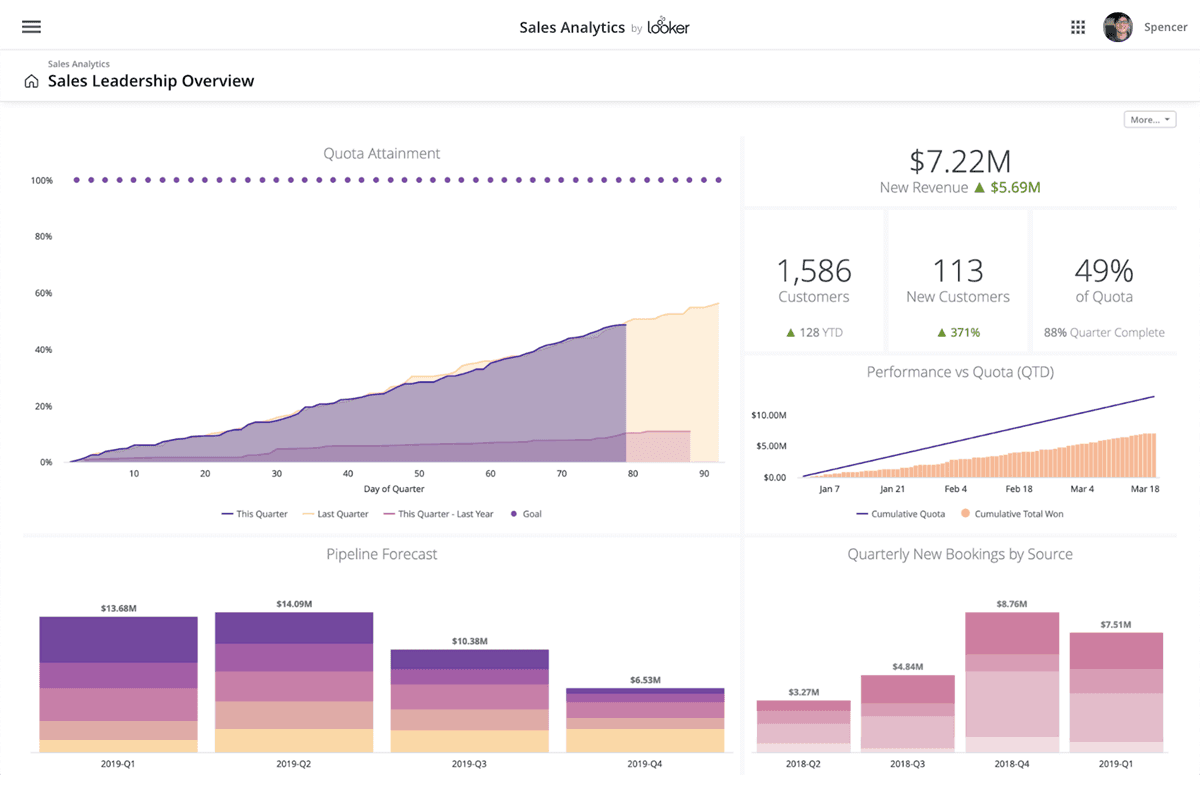
2. Digital marketing analytics
- You can customize powerful reports around components such as Google Ads, Facebook Ads, etc.
- It helps you grasp ad spend across different mediums with a unified dashboard that is a cross channel.
- You can make informed bid changes that are too on the spot related to updates of active ad performances.

3. Web analytics
- You can support your teams by providing access to trusted data from Google Analytics that is shareable.
- You can also dig deeper in your website with cross-property essential analysis, create schedules, dynamic cohorts, etc.
- Through a single point of truth, you can sharpen visibility into sales and marketing.
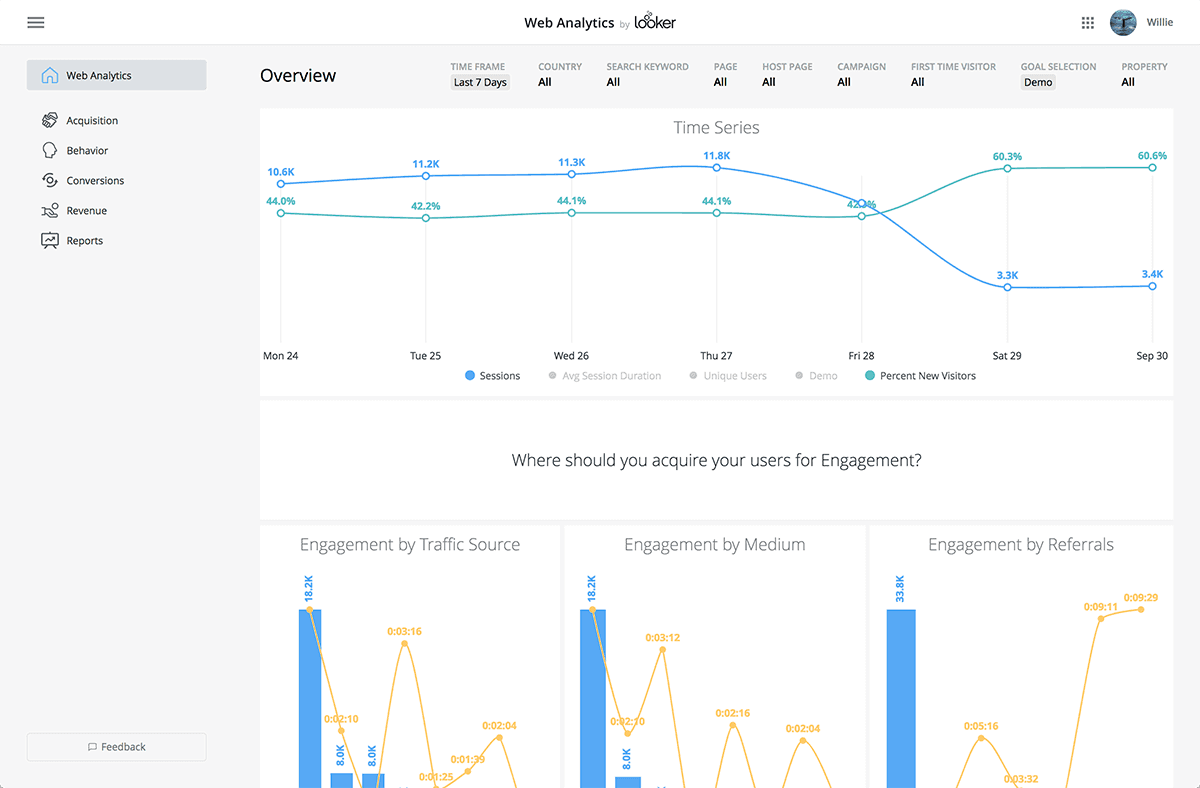
Looker Installation
These are the steps you will need to follow to install Looker for a customer-hosted Looker Deployment:
1. Looker Installation
- Add Looker to your server
- Looker configuration startup options
- SSL certificate configuration for proper HTTPS
- Forward port for a cleaner URL
- Enable Looker support to access your instance
- Set up Looker monitoring and backups
- Ensure that Looker can access important services
- Install rendering software
- Check whether your Looker instance can hold the Looker Action Hub
- Allowing secure database access
2. Configuring database for Looker
3. Connecting Looker to your database
4. Testing database connections
5. Configuring Looker sign-in options
Looker Alternatives and Competitors
Top competitors to Looker for analytics and business intelligence platforms are Tableau, Qlik, Sisense, MicroStrategy, PowerBI, etc.
Why is Looker better compared to business intelligence tools?
The below section compares top business intelligence tools and explains why Looker stands out.
1. Tableau vs. Looker
Tableau is optimized for in-memory data extracts, which generates management and governance challenges over time. Looker’s agile modeling, centralized layer develops a trusted environment for all users to communicate without data extraction.
| Check out Tableau vs. Looker |
2. Power BI vs. Looker
Power BI is a cloud offering, which can be deployed only on Microsoft’s Azure public cloud environment, and that limits future flexibility. Looker’s multi-cloud flexibility overcomes this challenge by offering modern cloud and on-premise SQL database solutions by future-proofing your data strategy.
3. Sisense vs. Looker
Sisense’s ElastiCube architecture creates complex deployments as users attempt to scale. With Looker’s centralized modeling layer, you can define business rules that can be accessed by both users and downstream processes.
4. MicroStrategy vs. Looker
MicroStrategy’s centralized semantic layer needs skillful IT resources that drive bottlenecks and limit the activity. LookML centralized, accessible modeling layer of Looker allows more users to collaborate.
5. Qlik vs. Looker
Both QlikView and Qlik Sense need data extraction to a proprietary in-memory database. Looker’s centrally managed modeling layer promotes dimensions reusability and checks as business rules only need to be determined once without extracts.
Looker Pricing
Looker publicly doesn’t release pricing information. Instead, it offers a customized plan based on the number of users and scale of deployment. Pricing is designed to fit businesses of all sizes. Looker pricing specialists work directly with you to ensure an ideal business pricing structure for your business.
Looker pricing starts at $3,000.00 for the entire data platform, according to a third-party website.
Looker Certification
A Looker certification is a valuable industry credential that demonstrates your technical skills. The exams use industry best practices and standards to assess whether Looker’s proficiency standards are met.
The following exams are now available:
1. LookML Developer
This exam covers LookML code development, maintenance, troubleshooting, caching policies, and data modeling best practices. This exam expects that you are comfortable with SQL and have at least 3+ months of experience with these skills before you register.
2. Looker Business Analyst
With this exam, you can learn about report development in Looker, visualization of data, and best practices of the dashboard. It is recommended to have 5+ months of experience with these skills to clear this exam.
Why should I get Looker certified?
By becoming Looker certified, you will:
- Become an expert within the data community
- Show your potential with Looker knowledge
- Add the skills to your resume by clearing the certification exam
- Get something that you can show off, and other Looker perks
What are the prerequisites for the Looker Certification exams?
While we highly recommend Looker training and on-the-job experience, there are no prerequisites for taking Looker certification exams. Please review the exam details for the exam you want to take for more information about the exam covers and the suggested training.
Conclusion
Looker is definitely a tool to watch out for the features and the robustness that it provides. I hope that you now have a brief idea about Looker and its objective. With this, we have come to the end of this blog. I hope you have enjoyed reading it. If you have any queries related to this blog, you can write them in the comments box below. We will be more than happy to resolve them. Thank you and Happy Learning!
 On-Job Support Service
On-Job Support Service
Online Work Support for your on-job roles.

Our work-support plans provide precise options as per your project tasks. Whether you are a newbie or an experienced professional seeking assistance in completing project tasks, we are here with the following plans to meet your custom needs:
- Pay Per Hour
- Pay Per Week
- Monthly
| Name | Dates | |
|---|---|---|
| Looker Training | Dec 27 to Jan 11 | View Details |
| Looker Training | Dec 30 to Jan 14 | View Details |
| Looker Training | Jan 03 to Jan 18 | View Details |
| Looker Training | Jan 06 to Jan 21 | View Details |

Madhuri is a Senior Content Creator at MindMajix. She has written about a range of different topics on various technologies, which include, Splunk, Tensorflow, Selenium, and CEH. She spends most of her time researching on technology, and startups. Connect with her via LinkedIn and Twitter .
















